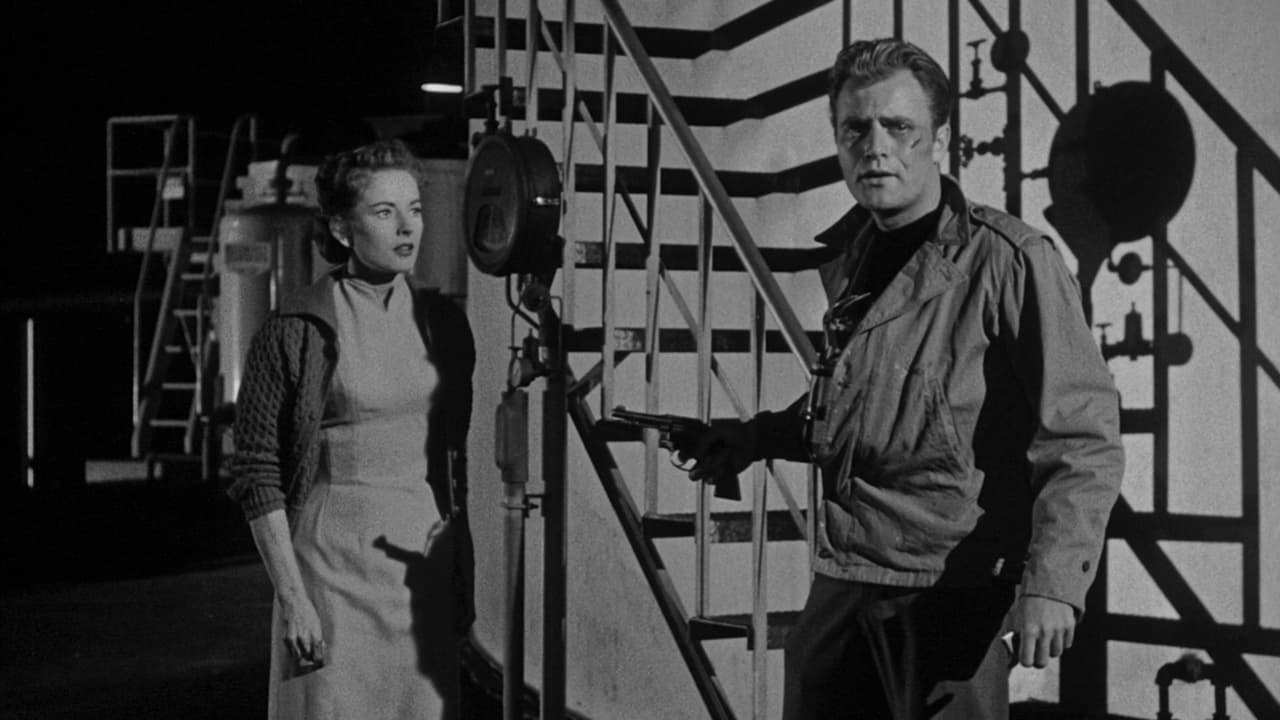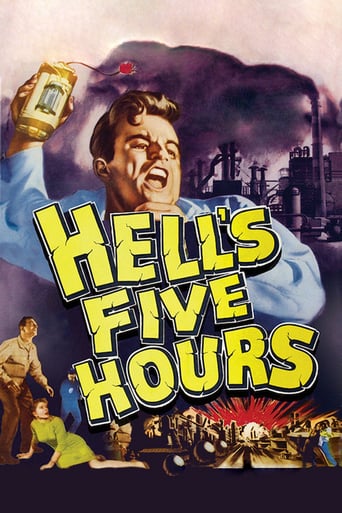

Released in the late '50s when paranoia about thermonuclear annihilation was running rampant through America, Hell's Five Hours looks not at Communist operators but at a disturbed individual with access to one installation of the nation's military-industrial complex. It's set at night, in cozy Meritville, a little town whose chief employer is a huge and ominous rocket-fuel plant (in an expressionist touch, it registers as a looming bank of lights in the dark distance).When a disgruntled worker (Vic Morrow) gets fired, he straps dynamite around his chest activated by a mercury-switch detonator if he topples over (from a rifle shot, say), the bomb goes off anyway. (It's Morrow's own appropriation of the Doomsday Machine.) His goal (which "voices" told him to accomplish) is nothing less than igniting a catastrophic explosion that will flatten the town and unleash clouds of deadly cyanide gas.When his first attempt to break into the plant undetected goes awry, Morrow slinging a corn-pone drawl patterned after the late James Dean realizes that he'll need some unwilling accomplices. So he turns up at the house of the plant's chief engineer (Stephen McNally), abducting his wife (Colleen Gray) and son. He then tears back to the plant, with Gray his hostage.The only movie ever made by Jack L. Copeland (who wrote, produced and directed), Hell's Five Hours is little more than a prolonged standoff between Morrow and McNally's forces, but it abounds with deft touches. Those that aren't so deft leave clues as to how society during the second Eisenhower administration was portrayed on contemporary film. (Atop one of the massive fuel tanks, which supposedly has a weak roof, Morrow orders Gray to test its strength by walking across it; so she does, in the same pair of high heels she had been wearing, late in the evening, at home.) With its premise a deranged terrorist stalking a sleepy, complacent hamlet in dead of night, with plans to kindle Armageddon, Hell's Five Hours stands as an uneasy preview of events that would occur years later: Three Mile Island, Bhopal, even 9/11. In 1958, it may have been received as alarmist; today, we, alas, know better.
... View MoreI saw "Hell's Five Hours" in theatrical release, and I recall that it actually drew audience applause at its conclusion. Vic Morrow, three years after "Blackboard Jungle", is perfectly cast. The film exhibits the tautness and grittiness evident in Allied Artists releases of the period. It's reminiscent, of course, to "White Heat" in its tank-farm setting; but "Hell's Five Hours" stands firmly on its own, and will definitely hold your attention as the seconds tick away. Highly recommended to all.
... View More